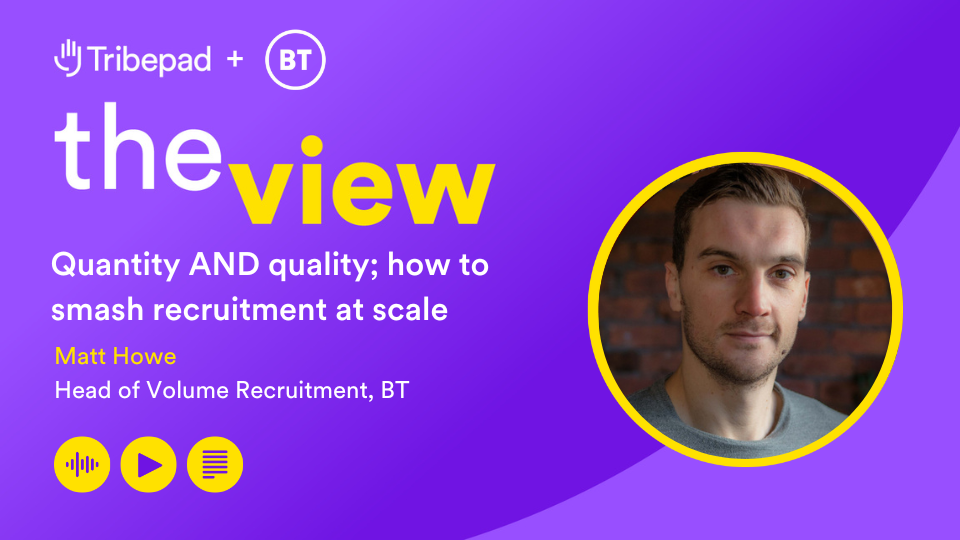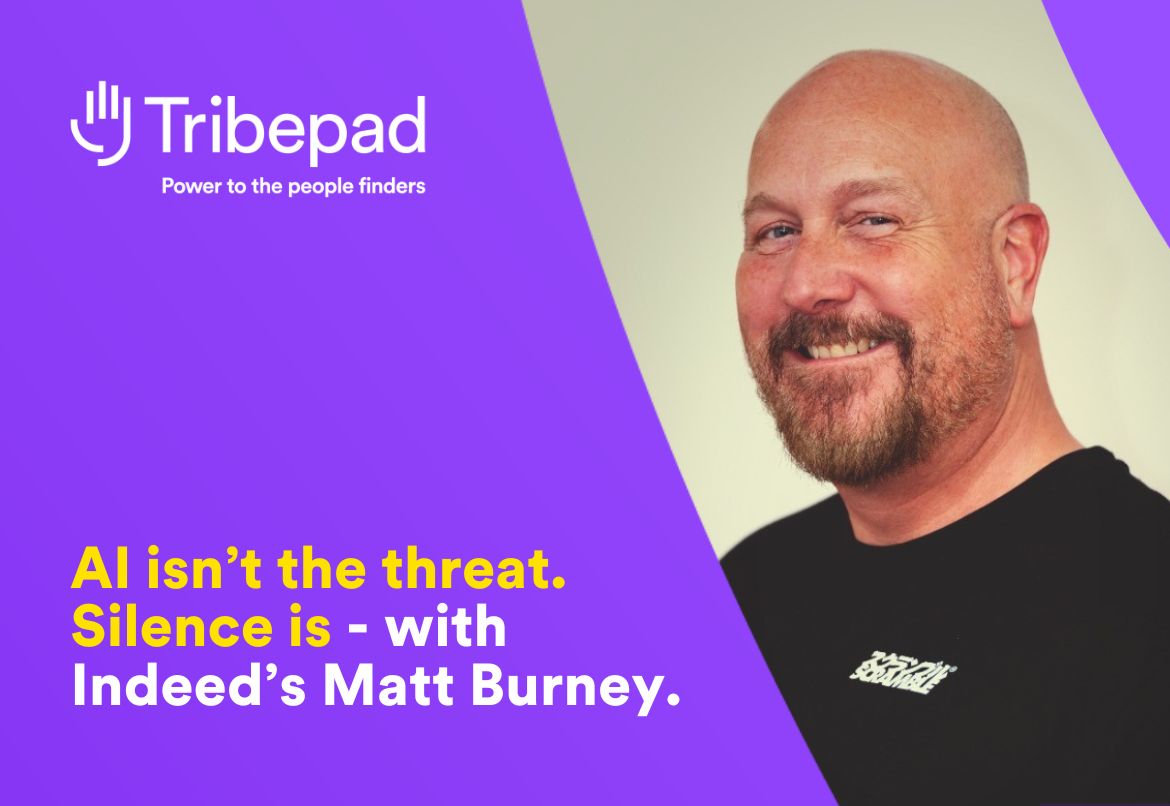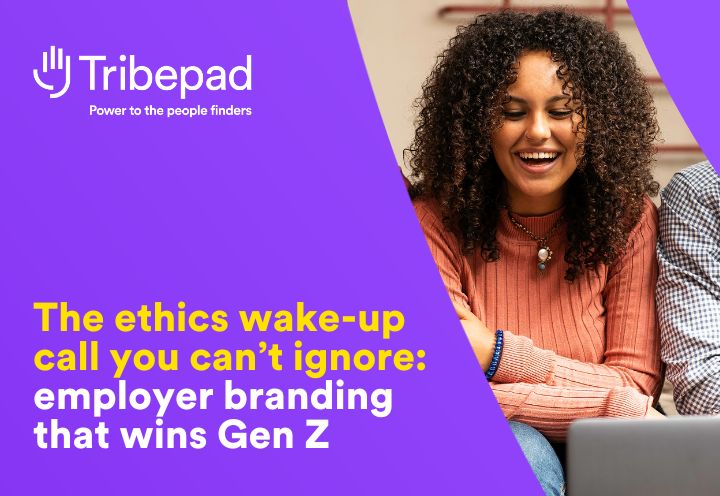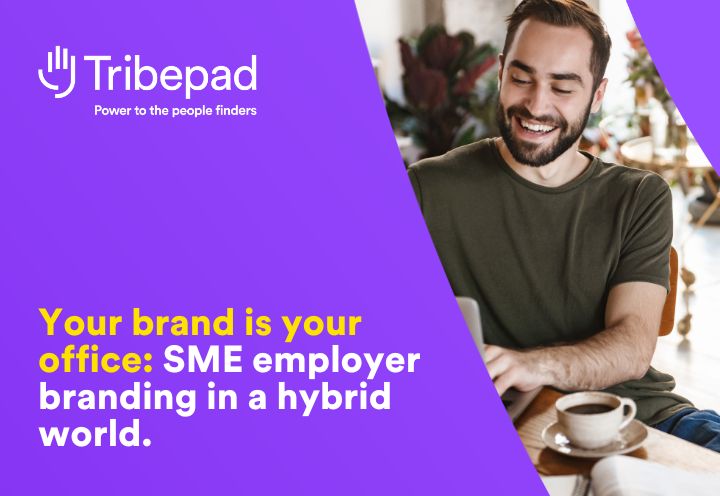Retail recruitment teams have usually spent years being bombarded by huge application volumes, so candidate attraction strategies haven’t always been a priority. And application volume is only increasing with the explosion of AI.
You need to whittle down application numbers, right? Not grow them.
But here’s the thing.
Focusing on candidate attraction isn’t just about increasing application quantity. It’s about increasing quality – attracting more of the right people – and increasing stickiness – keeping those people in-process. Even if your hiring isn’t the fastest, or your role the best-paid.
In that context, better candidate attraction methods are absolutely essential for retail recruiters. Even if you’re handling enormous volumes.
A changing market demands changing recruitment strategies
BT Group’s Head of Volume Recruitment, Matt Howe, spoke to us recently about how volume hiring has changed over the past few years, seeing previously easy-to-hire roles becoming much harder since the pandemic.

It’s now harder to hire than ever, in a candidate-driven market with huge talent shortages and high competition driving high drop-outs and high early attrition.
(For context, 99% of retail leaders are worried about talent shortages and what they mean moving forward for hiring. Pretty conclusive.)
Matt points out how this market puts a premium on candidate attraction:
We need to be absolutely clear on who we attract, and why. Not just attracting more applications. Then we can work backwards to build brilliant recruitment experiences tailored to the people we want.
There’s no time for employer complacency anymore. It’s not just – post an ad, then hire, now. Brand matters. Your value proposition matters. Everything we do – within recruitment and across the brand – should complement the people we’re trying to hire.
For many retail recruitment teams, this means playing catch-up. Especially for market-leading organisations who’ve always previously been able to trade on name alone.
Great recruitment tech to handle high application volumes is as important as it’s always been. But efficiency isn’t the only king in retail hiring anymore.
Let’s talk about some candidate attraction strategies that retailers might find good food for thought.
8 candidate attraction strategies for retailers
1 – Build your proposition for younger workers
Retail is the single biggest employer for 22-to-29-year-olds and a third of UK retail employees are under 25, The Retail Bulletin says. Unless you’re attracting candidates from this invaluable demographic, you’re likely to struggle maintaining the workforce you need.
The best place to start is your own people. Ask your younger employees:
- What do they love?
- What matters to them?
- What could you improve?
Understanding what your current younger workers value can help you improve their experience (and boost retention!), plus show you what you should communicate externally. A goldmine.
2 – Polish your employer brand
One of the most important candidate attraction techniques is employer branding. A strong employer brand helps you stand out from the sea of other generic retail jobs – and helps dissuade candidates from dropping out for a minor wage jump elsewhere.
Read more: Four steps to world-class employer branding
Once you’ve done the strategic work to define your employee value proposition, look across your social media, careers site, job adverts, and recruitment journey to check you’re being consistent.
Read our 41-question employer brand checklist for retail recruiters now, to assess where you’re at and get easy ideas to move forwards.
3 – Get your candidate experience ship-shape
A speedy, simple candidate experience is a hygiene factor for retail recruitment. Candidates are often customers, so leaving a poor taste in their mouth can hurt the bottom line. Plus, retail applicants are often applying to heaps of roles, often on-the-go, so their tolerance for faff and bother is extremely limited.
You’ll find it difficult to attract candidates (at least, attract to completion and hire) unless you’ve prioritised CX. BT’s Matt also highlights this, emphasising that “recruitment decision-making must be guided by data. But it’s so important to put the candidate or customer at the heart of those decisions too.”
For Matt, this ability to centre candidates is one of the major benefits of AI:
I think we’ll see some organisations using AI to talk to candidates less and save money. But the organisations that get AI right will use it to create more time to talk to candidates and improve the candidate experience.
4 – Tap into the hidden workforce
Sometimes, the most effective candidate attraction methods aren’t about standing out from competitors. They’re about fishing in a totally different pond.
A quarter of Britain’s working age population aren’t working. And unlike most other countries who’ve largely bounced back, our workforce remains around 1% smaller than it was since the pandemic.
If retailers can tap into this so-called hidden workforce, that’s a huge talent pool that’s much less congested.
Some of the key demographics you might consider:
- Carers
- Early retirees
- People with disabilities
- Parents
- Neurodiverse people
- People without degrees
- Ex-offenders
As with younger workers, work out your value proposition specifically for the groups you’d like to target. Perhaps you can offer subsidised childcare, for example. Maybe job sharing is an option, to cater for people who need more flexibility.
Then radiate this EVP outwards across your channels and recruitment marketing efforts.
5 – Target the right channels
We’ve talked a lot about messaging. But however compelling what you say is, it won’t make a difference if you’re saying it in the wrong places.
Ensuring you’re targeting the right channels is a critical part of candidate attraction. If you’re only going to university careers fairs, for example, you’re alienating people without degrees.
Your recruitment software should help you easily advertise across many boards (ideally with a pay-as-you-go option so you don’t need heaps of niche contracts). And it should offer simple but comprehensive reports to show which channels and campaigns are performing best for which roles, so you can optimise accordingly.
6 – Leverage your customers
In retail, customers are often also potential employees. That can have risks – as we’ve said, the cost of a bad candidate experience is potentially much higher. But it can also be a major luxury. One that few other sectors enjoy.
Use the talent pool that’s at your fingertips. What’s the daily footfall across your stores? Think of all the eyeballs you could get in front of your recruitment marketing campaigns or referral program. All those potential candidates who already like your brand enough to buy from you…
Free store vouchers for successful referrals could be an easy and enticing offer 🤔.
7 – Embrace skills-based hiring
Retail roles are usually ideal for skills-based hiring. They rarely need a specific qualification, so willingness to learn, attitude, and communication skills are often bigger deal-breakers.
Hays find that 73% of employers believe willingness to learn is more important than skillset, for instance.
Think about the true skills you need for a role. Is that degree really necessary? Could you use candidate assessments instead?
Spoiler alert: we’ve had our beady eyes on the evolution of skills-based hiring for a while. Our team’s currently planning an AI skills matching tool to help improve how you map and develop the skills in your organisation. It’s in the early planning stages yet but it’ll be ideal for retail recruitment teams because it’ll help you better quantify exactly which skills you need in-role, rather than looking at qualifications.
8 – Build a great employee referral program
The great thing about many retail roles is that there’s a low barrier to entry, so a potentially huge talent pool. That means all your employees probably know someone, if not multiple people, who might be a great fit for your team and culture.
But they might not know they know. That’s where an employee referral program comes in. Unlike, say, tech hiring, retail recruitment teams are perfectly placed to capitalise on referrals as a candidate attraction strategy.
Think of low effort, high impact rewards you could offer that might be compelling for employees. Bonus time off? Store vouchers?
Read more: 5 best practices for attracting employee referrals
No space for complacency: candidate attraction is essential for retail recruitment teams
As Matt succinctly puts it: “There’s no time for employer complacency anymore”. Even if your brand has always had huge application volumes, the recruitment market has fundamentally changed.
The winners will be the retailers who develop the strongest brands, dive the deepest talent pools, and best champion their candidates. None of these are groundbreaking candidate attraction strategies – but they’re often not happening, and certainly not consistently.
Retail recruiters can make themselves an essential asset for the brand, by building a proactive recruitment process that attracts, engages, and retains the best people.
Tribepad is the trusted tech ally to smart(er) recruiters everywhere, designed to help you fall back in love with recruiting.
Trusted by retail recruitment teams like Pizza Hut, Subway, Tesco, Superdry, Compass Group, Sodexo, Carpetright, Sofology, and Card Factory, 27 million people in 16 languages use Tribepad to make hiring fairer, faster, and better for everyone




